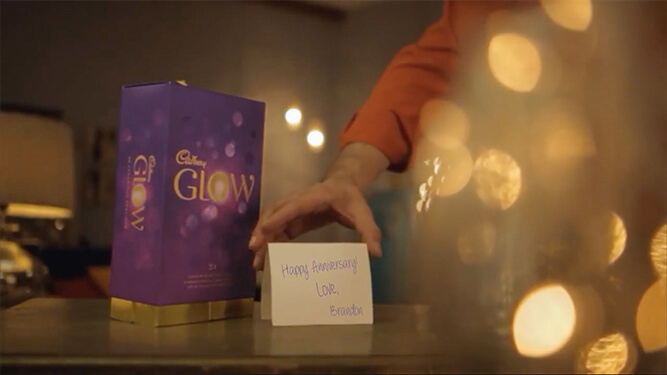Before we explore the meaning of the term Native Personalized Video, let’s review the key stages of producing a standard video, be it a TV spot, a movie or a marketing video
- Pre-Production: Develop concept, write script, prepare for filming
- Production: Shoot the scenes which constitute the building blocks of the final video
- Post-Production: Cut and edit the video, perform color correction and add effects
- Rendering: Run the various video and audio assets through a rendering engine in order to create the final video file (MP4, MPEG, HLS or other formats)
- Distribution: Get the video to where people will watch it: theatres, TV, YouTube, etc…
- Maintenance: Make changes to the content in order to keep it relevant. Mostly applicable to marketing-type videos.
When we compare this flow with that of producing a Personalized Video, there are several differences. However, what these differences are depends on the PV solution that is being used, as does the final product.
For Idomoo, the key differences happen in the Post-Production and Rendering stages. And these changes are what make us different from any other solution in the market.
Our full Personalized Video as a Service (PVaaS™) stack includes an Adobe After Effects plug-in that allows the creative agency to introduce the dynamic elements of the video during post-production. This ensures that the dynamic elements are treated in exactly the same way as the non-dynamic ones, receiving the same corrections and effects that are applied to the entire video, while still making use of the industry standard Adobe After Effects.
Then, we use our proprietary purpose-built rendering engine to generate millions of videos in real time. Our engine is GPU-based and is currently rendering at ~10X real time. This highly efficient video rendering technology allows us to generate each and every Personalized Video in real time while treating the dynamic elements as native to the video project.
The end result? Stunning, cinematic quality videos, where the dynamic (or personalized) elements truly form an integral part of the video and are therefore seamlessly integrated into it. Or in other words, Native Personalized Video.
Cadbury leveraged the power of Idomoo’s PVaaS platform to launch a campaign promoting their line of Glow gift chocolates. Videos featured cinematic quality personalized elements including name, photos unique to the viewer, and a special message from the sender.
So what do other companies do? How are their solutions different from Idomoo’s Native Personalized Video?
Since Idomoo is the only company to have reinvented the video rendering engine, all other market players have resorted to various workarounds, each with its unique disadvantages:
1. Stitching: Refers to the practice of adding a scene to the beginning or the end of a generic video. This has several clear limitations.
Disadvantages: Most of the video is generic and only one scene is dynamic, and given the manual process, the number of videos produced is very limited (thousands, not millions).
2. Overlays: Refers to the practice of using a generic video and personalizing only an animated overlay using either Flash or HTML5.
Disadvantages: The core video is the same and therefore the personalization is very limited, and playability issues often arise when viewing the video on standard mobile players.
3. Existing Rendering Technologies: Some companies use Flash or even Adobe After Effects itself to render their Personalized Videos. The issue here is that legacy rendering technologies were created for a world in which even video had to be rendered once or twice, not millions of times.
Disadvantages: Very ineffective, suffers from serious performance issues, cannot support real time video rendering and in the case of Flash, deliver low quality visuals.
4. Object Tracking: Refers to the practice of taking a fully produced video file (MP4, MPEG, etc…), and adding markers to mark where the dynamic elements should be inserted. The difference between this approach and Idomoo’s solution is that the dynamic elements here are treated very differently from the non-dynamic ones.
Disadvantages: Special effects, color corrections, etc. are not applied to the dynamic elements, resulting in a Personalized Video in which the personalization is visibly different from the underlying video. Also, this method does not support any sort of animated videos and is very limiting in terms of the animations that can be applied to dynamic elements.
Personalization workarounds may have been sufficient in the past, when Personalized Videos were primarily used to explain bills and statements and were deployed by a company’s CIO. However, as the technology matured in recent years, it has shifted to become a Marketing Technology and has been embraced by brand-conscious CMOs of travel & hospitality, CPG, sports and other industries where brand equity plays a major role.
These CMOs understand that it makes no sense for them to spend hundreds of millions of dollars on TV and Digital advertising, but then attempt to engage with their customers in a more meaningful way using dated videos that resemble a PowerPoint presentation with animation more than they do a branded video.
To put it another way, CMOs are asking themselves, “Would I sign off on this video if it were going to be used on mass media?” before they sign off on a Personalized Video campaign. They strive for excellence. They understand that the future of marketing is personalized, and that they should therefore refuse to lower their standards when they enter the personalized marketing domain.
Idomoo’s Native Personalized Video is the only solution in the market that can ensure these CMOs that the brand equity they have worked so hard to create is maintained, even when they communicate with their clients on a 1:1 basis.
Because why wouldn’t it?
I invite you to book a one-to-one demo of the Idomoo solution with a personalized video consultant to start a 1:1 customer journey and increase your revenue and ROI.




